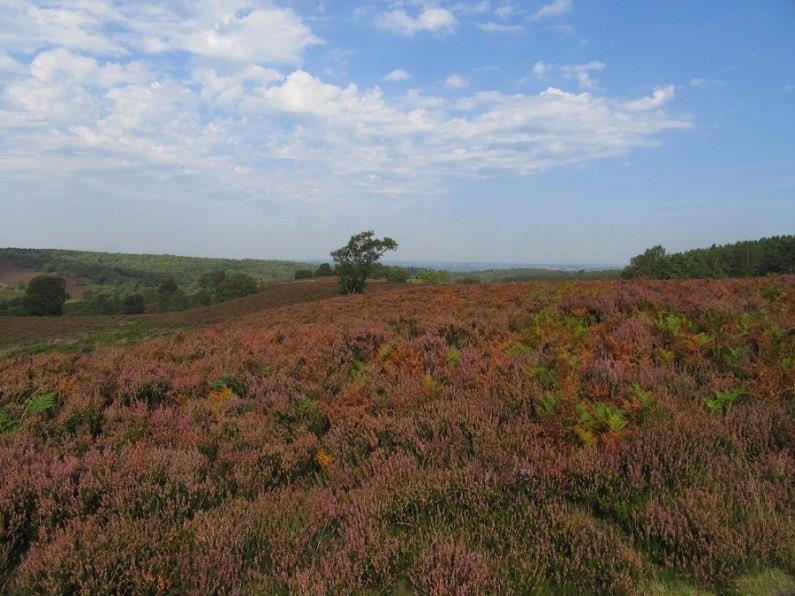Why is grazing needed?
Cannock Chase has always been known for its importance for wildlife and a significant area was officially recognised as an important place in England for wildlife when it was designated as a Site of Special Scientific interest (SSSI) in 1951. Cannock Chase consists of:
- heathland
- wetlands
- alderwood
- oakwood
- associated fauna such as wood decay beetles and sandy ground bees and wasps
All of the constituent parts that make up the Cannock Chase SSSI are protected from harm and neglect under UK law. Natural England assesses the condition of these habitats and species to make sure they are healthy and will thrive into the future.
Decades of ecological research tells us that a variety of vegetation structure across the heath, that is the presence of plants in a variety of heights and ages, makes a healthy heathland for wildlife. Therefore the condition of heathlands depends on the presence of open, warm, bare ground right up to wooded areas, as well as the presence of certain plant species such as bilberry and heathers in drier areas and bog mosses and sedges in wetter areas. This variety provides habitats for many birds, insects and reptiles as well as rare plants. The overall aim of heathland management is to create mosaics of vegetation with a varying structure that provides the warm microclimates that many heathland species rely on.

A rich tapestry of rare heathland and patches of woodland with associated wildlife make up this characteristic and internationally important area.
Low level conservation grazing is a traditional and well-used tool to manage these habitats, as part of a suite of management techniques. Indeed without grazing it is unlikely that habitats would ever reach favourable condition. Cattle can reach places that machines can’t, and their actions in creating microhabitats are almost impossible to replicate.
Natural England has put together a note about the species and habitats on Cannock Chase and the management they require. The document also outlines some of the research into the benefits of grazing open habitats.